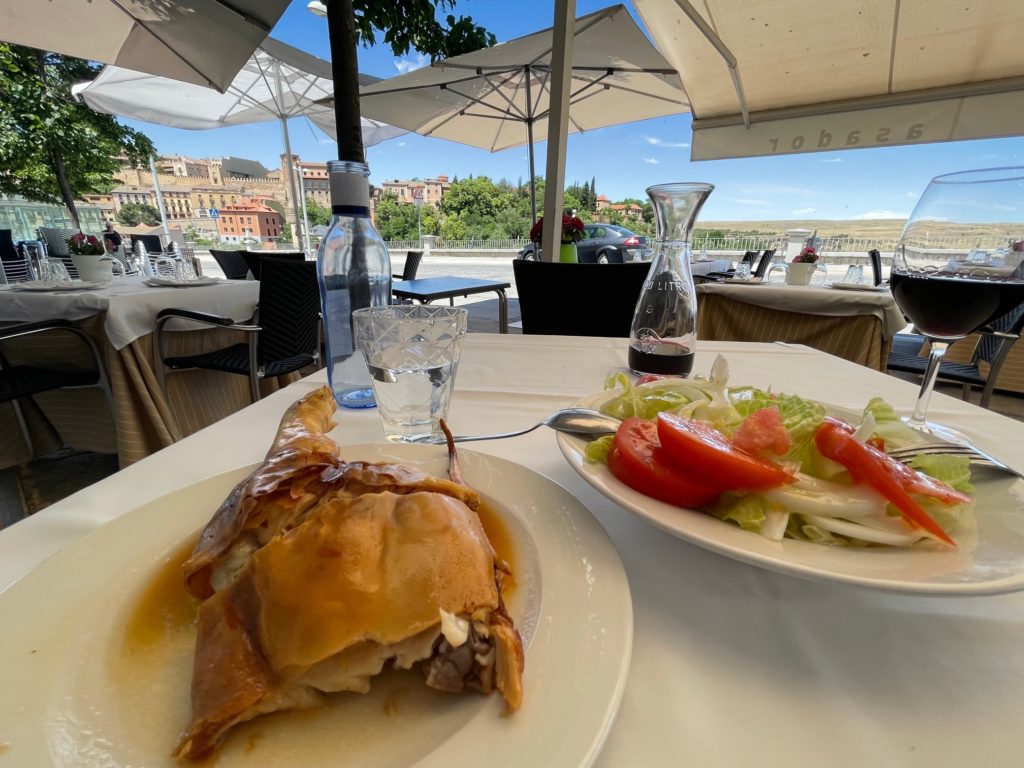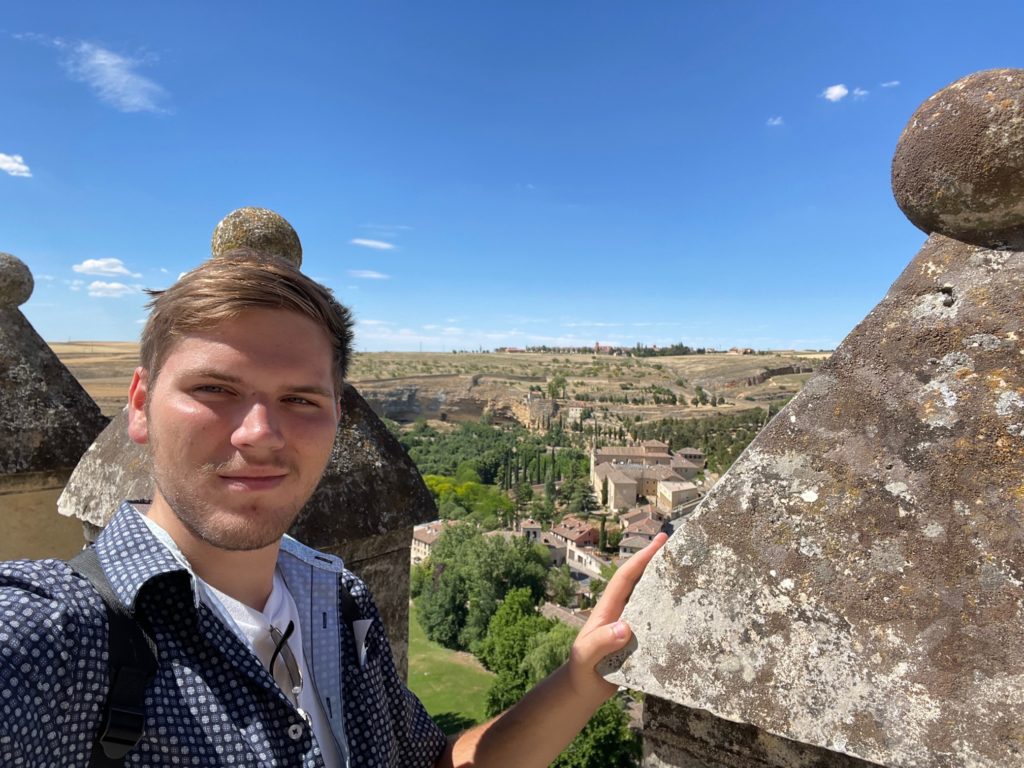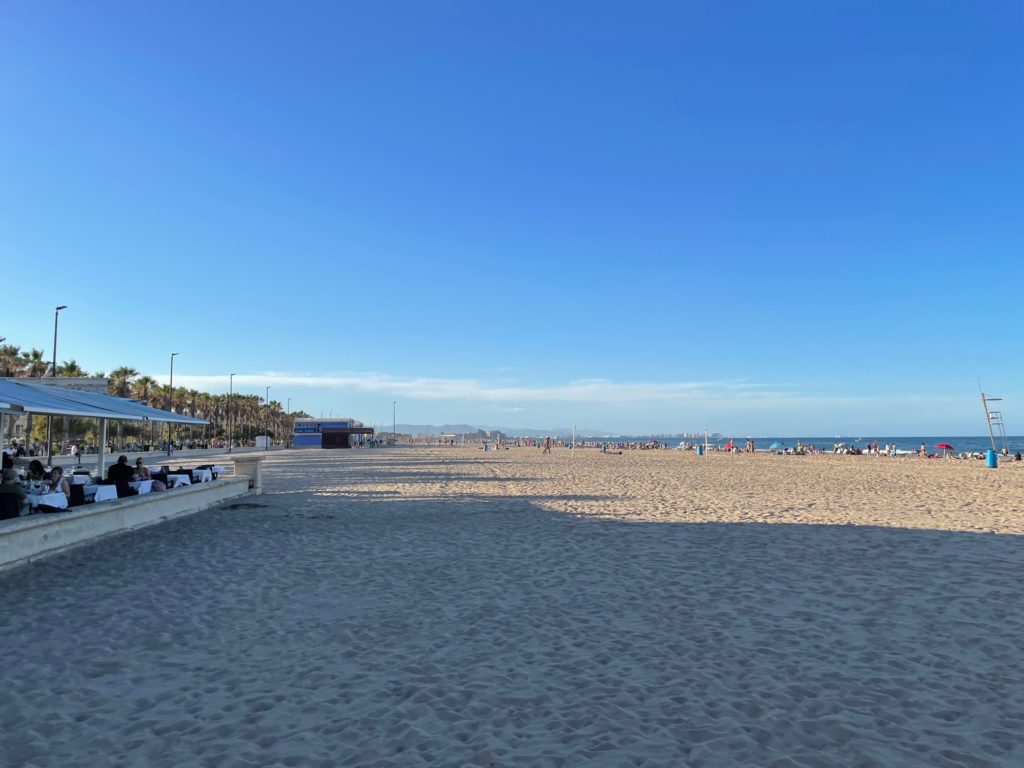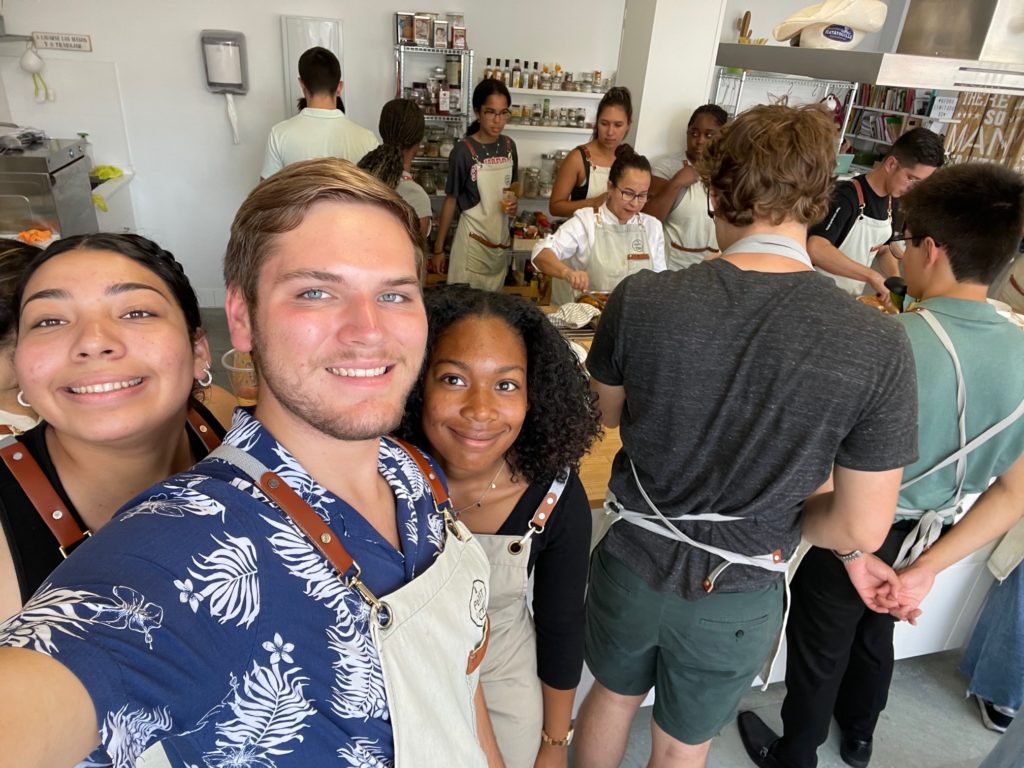The theme of this post is the mixture of gastronomy and culture and its origins in my trips.







Following the week when I traveled to Toledo, I decided to take a day trip to Segovia after my classes finished on Friday. As my bus was taking me into town, I will be honest when I say that I was underwhelmed by the incredibly normal city surrounding me. It was not until the bus drove through multiple streets and eventually took a turn that I found myself looking over the railings of the road, down a steep hill, at a beautiful countryside. Immediately, I was left speechless at the sight of the massive Roman aqueduct and the medieval city looming on top of the hill. At the suggestion of my Spanish language professor, I tried the famous Segovian cochinillo, roast suckling pig. I ordered the full menú, so I received multiple courses of traditional Segovian dishes for my meal. I asked the waiter about how they prepare the suckling pig, and he explained that they divide a suckling pig in half and roast it in their large wood fire oven for around two hours where it develops a crispy skin and extremely tender meat. With my full menú, I also got a dish made with judiones, a large bean grown in Segovia, that seemed to me something like a Spanish jambalaya or gumbo, as well as a sopa castellana, a traditional soup from the region. It was truly a great experience with the combination of the sights from my table, the taste of the meal, and the tradition of it all. After my lunch, I was able to visit the Cathedral of Segovia and a few smaller churches, walk around the aqueduct, and my favorite part, I was able to tour the Alcazar of Segovia. The alcazar is a beautiful castle that sits atop steep slopes and overlooks the countryside. In the centuries after it was built, it was used as an artillery school with much of the memorabilia from that time being on display today.


The following day, two of my friends and I decided to take the train to Valencia. I had planned a large itinerary of things to do, but due to it taking longer than expected to get to the city center and shopping for a bit, we ended up ditching the whole plan and decided to spend the whole day on the beach. As a student from Indiana where our only beaches are on the shores of lakes, the Valencian beach remains the best beach I have visited in my life. Of course, I ordered the traditional paella valenciana, made with rice, rabbit, chicken, vegetables, and most notably saffron. As paella is a dish from Valencia, I thought it was necessary that I try it while I was there. The dinner during sunset on the beach was a perfect capstone for the day.


Lastly, just two days ago, I attended a cooking class with some friends in the same program as me where we learned how to make four different dishes. The first was Andalusian gazpacho, a cold soup that is drank like a beverage made with many vegetables and tomatoes. This was my third time having gazpacho, and while I did not exactly enjoy it the first two times, I was surprised by how well our gazpacho turned out. It was the simplest of the four dishes as it essentially just requires throwing chopped vegetables into a blender until completely pureed, adding a bit of salt, and leaving in the refrigerator until cold. Gazpacho has its origins as a cold and fresh dish that is intended to refresh the drinker in the hot Andalusian sun. The second dish was the tortilla española. At the time of writing this, I am sure that I have had tortilla española at least 10 to 15 times, and I think its a classic staple that never disappoints. Again, I appreciated learning how to make such a simple and delicious dish. It involved chopping potatoes, cooking the potatoes in olive oil until soft and golden, scrambling eggs, combing the potatoes and eggs, and putting it all in a deep pan with olive oil to get its recognizable dome shape. The most exciting part was flipping it in the pan to cook both sides. I received applause from my entire group and the head chef for successfully flipping it without messing up (which I was not sure I could do). For the main course, we made paella de mariscos, another form of paella from Valencia but made with seafood instead of rabbit. For us to make the paella, we needed the help of nearly everyone in our group to work on different parts, chopping vegetables, chicken, and squid, cleaning shrimp, and preparing the other ingredients. The dessert we made was called the tarta de Santiago, a Spanish almond cake with origins in the Middle Ages. The hardest part of the cooking class was trying to focus on chopping ingredients for everything else while we could smell this cooking in the oven. It is relatively simple to make as well as it is almond flour, cinnamon, eggs, and sugar. It tasted as amazing as it smelled, and to top it off, we decorated it in the traditional style with a cross of St. James on the top made out of confectionary sugar. It was a great experience, but I just hope that I will remember how to make everything when I return home.
I am very glad that I have the experience to not only see culture but taste the tradition of the places that I get to visit. To top it off, it was even more fascinating to be able to go to a cooking class where I was learned what goes into making multiple dishes that I had already tried before.